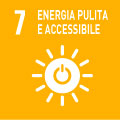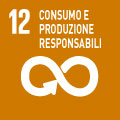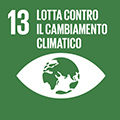- Docente: Chiara Samorì
- Crediti formativi: 6
- SSD: CHIM/12
- Lingua di insegnamento: Inglese
- Moduli: Laura Tositti (Modulo 1) Chiara Samorì (Modulo 2) Paola Galletti (Modulo 3)
- Modalità didattica: Convenzionale - Lezioni in presenza (Modulo 1) Convenzionale - Lezioni in presenza (Modulo 2) Convenzionale - Lezioni in presenza (Modulo 3)
- Campus: Bologna
-
Corso:
Laurea Magistrale in
Chemical Innovation and Regulation (cod. 5701)
Valido anche per Laurea Magistrale in Chemical Innovation and Regulation (cod. 5701)
Conoscenze e abilità da conseguire
At the end of the course the student be aware of the crucial role of assessment (chemical, toxicological, physical) for protection of the environment. A special focus will be posed to the detection of plastic materials and to the evaluation of the threat that these persistent pollutant make to the different environments. The student is expected to be able to: 1. propose the most suitable methods to assess environmental quality and will be skilled in the interpretation of the results obtained; 2. predict the procecces and velocity of transformation that pollutants undego in the enviroment and forcast their fate and impact.
Contenuti
The UC consists of three modules, with the following contents:
(1) Environmental analysis and detection in the environment
Strategies of assessment. Experimental design. Sampling campaigns. Laboratory requisites in inorganic and organic environmental analysis (application to airborne particulate analysis). Examples of quality control procedures (standard methods procedures). Examples of high natural background and methods to distinguish natural and anthropogenic contributions of chemical species. Use of stable and radioactive isotopes.
(2) Environmental risk of plastic materials
Detection of plastic materials. Assessment of the threat posed by persistent polluting plastics. Effect of the presence of plastics in different environments.
(3) Environmental fate of organic pollutants
Information on the environmental partition of main organic pollutants and their key descriptors. Main degradation pathways and environmental fate of organic pollutants. Estimation of the expected sinks and persistence of unknown organic compounds on the basis of molecular structure.
Testi/Bibliografia
Lecture slide handouts will be available for students
Reading lists will be provided as appropriate to support lectures
Metodi didattici
The course unit is divided in three modules. Each module is organized in theoretical classes where main concepts are explained, as well as tutorial classes with discussion of case-study examples.
Modalità di verifica e valutazione dell'apprendimento
Each module is assessed through a written assignment, including a report on literature research
Strumenti a supporto della didattica
Power point slides
Orario di ricevimento
Consulta il sito web di Chiara Samorì
Consulta il sito web di Laura Tositti
Consulta il sito web di Paola Galletti
SDGs




L'insegnamento contribuisce al perseguimento degli Obiettivi di Sviluppo Sostenibile dell'Agenda 2030 dell'ONU.
